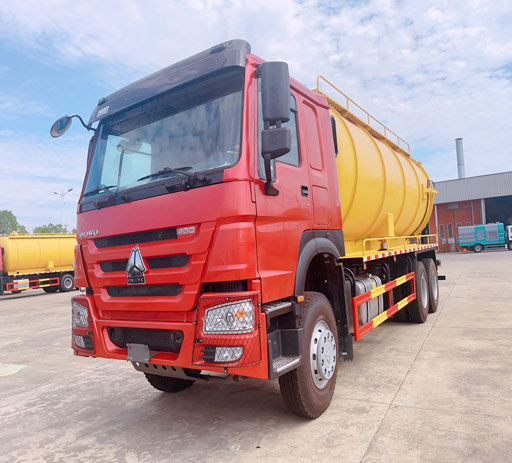Auger Compactors: Revolutionizing Waste Management

Introduction to Auger Compactors
In an age where sustainable waste management is becoming increasingly crucial, auger compactors emerge as a vital solution for businesses and municipalities alike. These innovative machines optimize waste processing, reduce costs, and minimize environmental impact. Auger compactors utilize a unique design that efficiently compresses waste materials, making them ideal for various applications from commercial settings to industrial waste management.
What are Auger Compactors?
Auger compactors are specialized pieces of equipment designed to compress waste materials into smaller volumes for easier handling and disposal. They operate using a rotating screw mechanism (auger) that compacts waste inside a container. This mechanism provides several advantages over traditional compaction methods, leading to enhanced efficiency and reduced operational costs.
Key Features of Auger Compactors
- High Compaction Ratios: Auger compactors can achieve higher compaction ratios compared to standard compactors.
- Continuous Operation: These machines are designed for continuous operation, minimizing downtime.
- Space-Saving Design: Their compact design allows for efficient use of space in waste storage areas.
- Versatility: They can handle various types of waste, including recyclables and general refuse.
How Auger Compactors Work
The Auger Mechanism
The heart of an auger compactor is its auger screw, which rotates and pushes waste into a smaller confined space. As waste is fed into the unit, the auger compresses it against the walls of the container. This process not only reduces the volume of waste but also breaks down materials, making them easier to handle.
Operational Process
The operational process of auger compactors involves several key steps:
- Feed Waste: Waste is loaded into the compactor through its hopper.
- Compaction: The auger activates and begins to rotate, compressing the waste material.
- Loading Compacted Waste: The compacted waste is pushed into a refuse container or dumpster, ready for disposal.
- Monitoring and Maintenance: Regular checks ensure the auger is operating efficiently and safely.
Benefits of Using Auger Compactors
Cost Efficiency
Investing in auger compactors can significantly reduce waste disposal costs. By decreasing the volume of waste, businesses can transport more waste per trip, reducing transportation expenses.
Environmental Impact
Reducing landfill waste through effective compaction can help minimize the environmental impact. Many auger compactors can also facilitate recycling through proper separation of materials.
Enhanced Safety

With reduced waste volumes, storage and handling become safer. Less clutter around firms ensures a safer working environment for employees.
Applications of Auger Compactors
Commercial Use
Many retail establishments use auger compactors to manage cardboard, paper, and other recyclable materials. This practice streamlines the recycling process and makes storage more manageable.
Industrial Use
In industrial settings, auger compactors are effective in managing various types of waste such as scrap metal and plastic. Their heavy-duty design ensures they can handle tough materials without compromising performance.
Municipal Waste Management

Many municipalities incorporate auger compactors in their waste management systems to streamline the collection and handling process, significantly improving operational efficiency.
Choosing the Right Auger Compactor
Factors to Consider
When selecting an auger compactor, consider the following factors:
- Size: Ensure the compactor fits well in your space and meets your waste handling capacity.
- Compaction Ratio: Look for models offering higher compaction ratios to maximize efficiency.
- Material Type: Determine if the unit can handle the specific waste materials you produce.
- Energy Efficiency: Opt for models that are energy-efficient to reduce operational costs.
Examples of Popular Auger Compactors
| Model | Compaction Ratio | Volume Capacity | Power Source |
|---|---|---|---|
| EcoCompactor 5000 | 10:1 | 500 liters | Electric |
| Heavy Duty Auger 9000 | 15:1 | 900 liters | Diesel |
| Compact Eco 3000 | 8:1 | 300 liters | Electric |
Maintenance Tips for Auger Compactors
Regular Inspections
Scheduled inspections of the auger, hydraulic systems, and safety components are crucial for longevity and performance.
Lubrication
Regular lubrication of the auger and bearings is essential to ensure smooth operation and reduce wear and tear.
Cleaning
Keeping the compactor clean helps prevent jams and other operational issues. Regularly remove debris and waste from the exterior and interior components.
Future Trends in Auger Compactors
Technological Advancements
The evolution of technology is paving the way for smarter auger compactors equipped with sensors for real-time monitoring and data analytics to optimize waste management processes.
Sustainable Practices

With increasing emphasis on sustainability, future auger compactors may incorporate more eco-friendly materials and practices, further reducing their environmental footprint.
Frequently Asked Questions (FAQ)
What is the average lifespan of an auger compactor?
An auger compactor can last anywhere from 10 to 20 years, depending on use, maintenance, and durability.
How much waste can an auger compactor handle?
The capacity varies by model, but auger compactors can typically handle between 300 to 900 liters of waste at a time.
Can auger compactors recycle waste?
Yes, auger compactors can effectively separate recyclables such as paper, cardboard, and plastics, making the recycling process more efficient.
Are auger compactors energy-efficient?
Many modern auger compactors are designed to be energy-efficient, helping to reduce overall operational costs.
What types of waste can be processed by auger compactors?
Auger compactors can process various waste types, including general refuse, recyclables, and industrial waste, depending on their specifications.
Is professional training necessary to operate an auger compactor?
While basic operation can be straightforward, professional training is recommended for safe and efficient use, especially in industrial or commercial settings.
